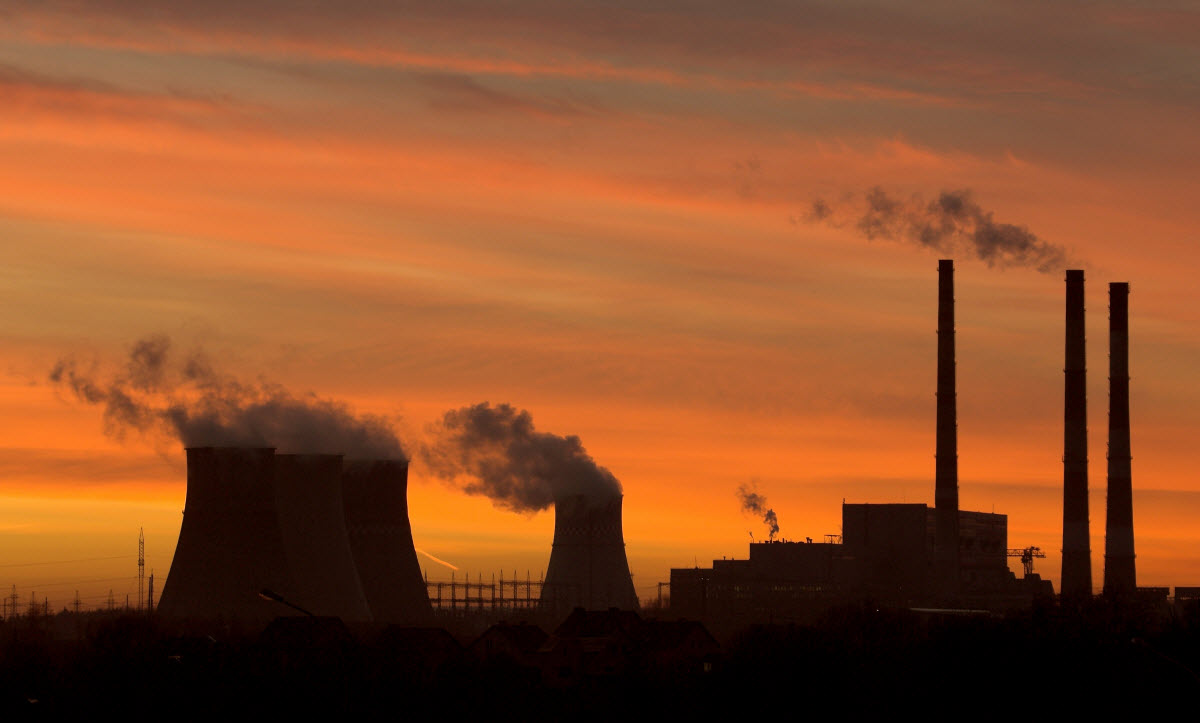 By Leanna Sweha
By Leanna Sweha
Democrats in Sacramento are in lockstep against President Trump on climate change. At the same time, it looks like a rift is growing between some Democrats who prefer Cap-and-Trade and others who prefer direct (or “command and control”) regulation of greenhouse gas emissions. If the rift widens, it could harm California’s climate leadership.
Governor Brown is in the Cap-and-Trade camp, while environmental justice aligned legislators are in the direct regulation camp.
Cap-and-Trade is a market-based system that allows regulated sources of greenhouse gases to find the least-cost way to comply with a declining emissions cap, either through direct reductions or by purchasing emissions credits on the market.
With direct regulation, the state commands a source to reduce greenhouse gas emissions to a certain level or face fines.
The rift among Democrats has a lot to do with distinctions between greenhouse gases on one hand, and criteria and toxic pollutants on the other.
Greenhouse gases, most notably carbon dioxide, are global pollutants which are not direct health hazards. Consider that the ultimate goal of state climate laws is to keep global warming under two degrees Celsius.
On the other hand, criteria and toxic pollutants, such as ground level ozone, are local health hazards. They are directly regulated under the Clean Air Act by the state and by local air districts to keep concentrations below hazardous range.
But there’s also a connection. When fossil fuels burn, they release both greenhouse gases and criteria and toxic pollutants. So, generally speaking, fewer criteria and toxic pollutants is a co-benefit of directly reducing greenhouse gases.
Environmental justice groups advocate for poor communities which are near refineries, industrial plants and freeways. These groups rightfully point out that all residents deserve equal protection under environmental laws.
So, it makes sense for environmental justice groups to focus on the co-benefits of reducing greenhouse gases.
Under AB 32, the 2006 law that mandates greenhouse gas emissions be reduced to 1990 levels by 2020, the state must consider these co-benefits. AB 32 also established the Environmental Justice Advisory Committee (EJAC) to advise the Air Resources Board on its Scoping Plan, the state blueprint for climate regulations.
The Air Resources Board is currently updating its Scoping Plan to meet the 2030 climate goals of SB 32, enacted in 2016. SB 32 requires California to reduce greenhouse gas emissions to 40 percent below 1990 levels by 2030.
The EJAC has recommended against Cap-and-Trade and in favor of Cap-and-Tax in the 2030 Scoping Plan. Under Cap-and-Tax, each regulated source must reduce its emissions below a cap and pay a tax on amounts emitted.
EJAC doesn’t like Cap-and-Trade because regulated sources can avoid direct reductions by buying emissions credits (allowances). EJAC particularly criticizes the fact that the state gives out free allowances to some sources to avoid “leakage,” that is, sources moving out of state and emitting elsewhere. EJAC also doesn’t like the fact that sources can buy emissions offset credits that pay for programs outside the state, for example, forest protection in the Amazon.
Cap-and-Tax is the best of both worlds for environmental justice groups. It is a direct regulation that, like Cap-and-Trade, also generates revenues for climate programs. Under current law, at least 25 percent of these revenues must go to climate programs for “disadvantaged communities”.
Brown also needs revenues to continue, because 25 percent by law go to the high speed rail project.
Language enacted last year requires the state to “prioritize” direct greenhouse gas emission reductions to meet the 2030 goal. So, the draft 2030 Scoping Plan relies largely on Cap-and-Trade but also includes direct regulation of oil and gas refineries.
This apparently has not satisfied environmental justice groups. Last week, environmental justice aligned legislators introduced a bill that leaves no doubt that direct regulation must come first. AB 378 would only allow Cap-and-Trade if it “complements” direct regulation. Cap-and-Tax also would fit nicely into AB 378.
Brown has asked the Legislature to reauthorize Cap-and-Trade by a two-thirds majority, because the courts may invalidate it as an illegal general tax which has not been approved by a two-thirds vote. However, he may not have expected the bill to come in the form of AB 378.
Democrats hold a two-thirds majority in both houses and so in theory can pass AB 378 by a two-thirds majority. The question now seems to be whether Cap-and-Trade will survive and under what conditions.






Hi Leanna,
Thanks for the informative article laying out the pros and cons of various approaches. Given your knowledge in this area, what would your specific recommendation be ?
And on a lighter note, would it were to possible to :
Forget Trump
I know the feeling, I’m still trying to:
Keith
I now feel and understand your pain. However, since it is now be solely inflicted by POTUS, can we not at least focus on his actions instead of dwelling on the faults of his predecessor ?
Like Democrats/liberals/progressives focused on Obama’s actions and didn’t dwell on his predecessor?
All I have to say to that is LOL
Can we please stay on topic?
Patently untrue… it will take the concurrence of the Legislative branch, Judicial branch or both! We have already seen the Republican controlled Congress, let POTUS know at least one of his nominees, “ain’t a happening thing”, and two court decisions saying essentially the same thing related to one of his first EO’s.
We elected Trump president, not the omnipotent Almighty.
I find it reassuring that there were two Republican appointed Judges, who unanimously agreed with the two Democratic appointed judges. The one who first opined “whoa” was a Republican appointee.
We do have checks and balances… POTUS is just now figuring that out.
And yes, moderator, I believe the above is directly on topic.
Clearly we are going to need to come up with a new set of rules that are fair for these type of articles. Because it’s getting Off topic very quickly with these kinds of exchanges. We are not even discussing the crux of the article.
David, the headline for this article opened the door. A more focused, less sensationalistic headline would solve the problem in this case, and is a lesson for future headlines.
Ah… “climate” can mean the physical/environmental climate, or to the political climate, but it is easy to blur the lines of what is meant by “climate”… after all they are somewhat intertwined.
Knowing Leanna, I don’t think she meant it to be as inflammatory as some took it as, I think she was stating, forget about Trump’s policies on climate change, California Democrats are not in agreement.
I don’t think anybody took it as inflammatory. One of your editorial staff decided to take a little shot and I responded in kind. That’s all.
That’s what I’m saying, I don’t think that was her intent. Leanna is one of the least ideological members of my board and I don’t even know her politics that well.
Not talking about Leanna.
My response was to Richard (who referred to the headline) and then you jumped in changing the subject (both are board members), so how was I to know you were not talking about Leanna?
I agree with Richard. The head line sets the tone. Is there even a reference to Trump or national policies anywhere in the article itself?
A tax on carbon is yet a third alternative. That seems worth discussing, too. Seems like it could satisfy both groups: money for high speed rail and reduction of carbon production everywhere, not just in wealthy communities.
Unfortunately, the EJAC has not yet become well schooled in economics. The Cap & Tax method actually leads to LESS control of local emission sources. Under Cap & Trade, a firm is given a specific allowance and must buy more allowances to go beyond that cap. Their ability to increase emissions is limited by the availability of allowances that other firms are not using. Under Cap & Tax, a company just pays a higher tax rate to emit as much as they want. The EJAC made a similar mistake in the 2008 Scoping Plan when it came up with an alternative that ran counter to its intended goal.
There are at least two better solutions:
1) Adjust individual allowances for local conditions. The current method relies on starting from historic emissions and everyone ramps down at the same rate. Instead, facilities near EJ communities could have allowance reductions at a faster rate that reflects co-benefits.
2) Greater focus on the criteria pollutant regulations instead. As an example, increased mercury regulation by the US EPA has led to reduced GHG emissions by coal plants across the U.S.–not direct GHG emission regulation.
The EJAC would be well advised to get competent economic advising instead of shooting in the dark.
Thank you for your insight here Richard. I understand another issue is that with Cap-and-Tax or a Carbon Tax you lose the ability to link with other jurisdictions (California is already linked to Quebec) and to use offset programs that benefit developing countries.
Richard- well said. Cap and Tax is simply a boondoggle for legislators looking for bigger government and cash to play with. I think the adjustment to local conditions is entirely appropriate as is a continuing program to reduce criteria pollutants as well.
One approach that everyone seems to be ignoring would be an increase in the gas tax. This could be done gradually so that people can adjust slowly. Such an increase would provide incentives for people to move to more fuel efficient vehicle, use alternatives to automobiles (walking, bikes, and public transit). Increasing the gas tax would not require any complex bureaucracy or any additional complex rules and regulations.
Gas tax increase is long overdue…
Yes, It’s surprising that there is no enthusiasm for a gas tax increase amongst the groups that are concerned about fossil fuel use and CO2 emissions. Another benefit from an increased gas tax would be that the money could be used for much needed repairs and upgrades to our highways and bridges.
This same split just played out in Washington.
https://insideclimatenews.org/news/09112016/washington-state-carbon-tax-i-732-ballot-measure
It only got 42% of the vote.
Maybe there’s hope that we won’t go that route either.
Please come Thursday, March 2 from 7:00-8:45 pm (doors will open at 6:30 pm) for an educational presentation on the Cap and Trade policy at the Blanchard Room, Mary L. Stephens Davis Branch Library, 315 E. 14th Street, Davis.
California’s Cap and Trade Policy: A Tool for Reducing Green-house gas emissions up for Renewal. The Cap and Trade program, a critical tool for implementing AB 32, is up for renewal to continue after 2020 (AB 151). The Global Warming Solutions Act of 2006 (AB 32) establishes a comprehensive program to reduce greenhouse gas emissions from all sources throughout California. Cap and Trade is one complex tool recently established to ease global warming and extreme weather events by reducing carbon emissions. This evening program offers information and discussion.
Now that it is launched, can Cap and Trade become an effective tool for carbon reduction? Or, should Cap and Trade be adjusted so as not to allow big polluters to by out-of-state credits, while continuing to pollute, mostly in low-income areas and communities of color? Alternatively, is it possible to get effective regulation to hold polluters liable for reducing green-house gas emissions and pollution passed by the legislature when powerful corporate interests work to oppose or water down effective bills?
Two panelists will present alternative views: a speaker (to be confirmed) from the Natural Resources Defense Council in support of Cap and Trade, and Adam Scow, the California Director at Food and Water Watch, to speak in opposition. There will be materials available on both positions.
Nancy Price, convenor of the Women’s International League for Peace & Freedom’s Earth Democracy group, will moderate the evening.